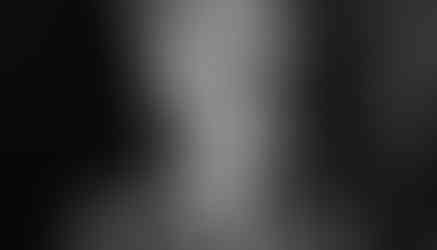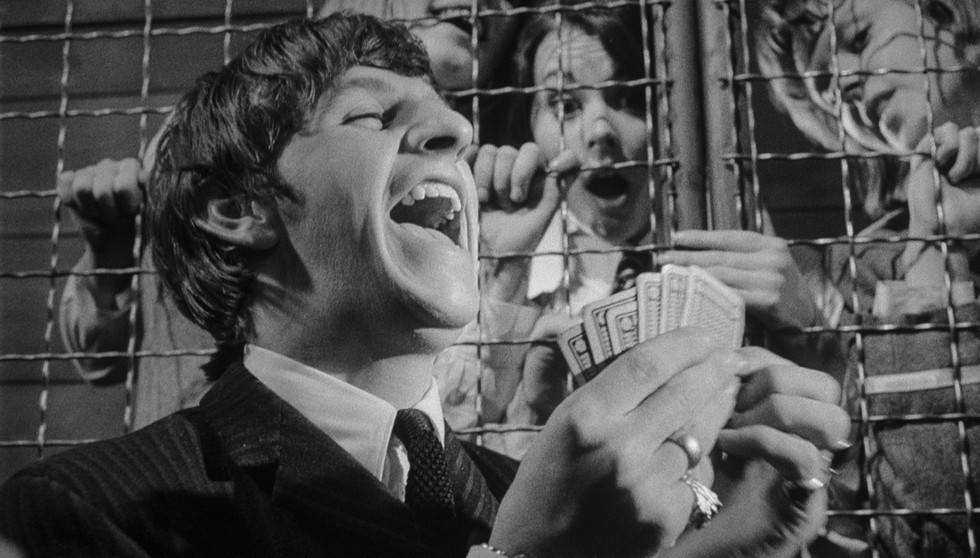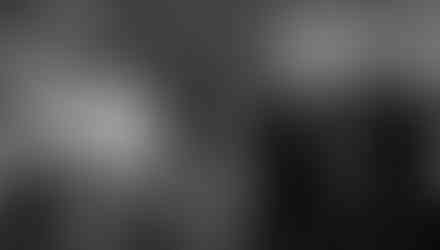“A Hard Day’s Night” in 4K Ultra HD? It just doesn’t get any better
- Craig Shapiro & Bill Kelley III

- Jan 17, 2022
- 6 min read
Updated: Jun 5, 2022
4K ULTRA HD REVIEW / HDR FRAME SHOTS

The Beatles rehearse “I’m Happy Just to Dance with You,” before the TV Variety Show broadcast, which was filmed at London’s Scala Theater.
(Click an image to scroll the larger versions)
“A HARD DAY’S NIGHT: THE CRITERION COLLECTION”
4K Ultra HD, Blu-ray, 1964, unrated
Best extra: “Picturewise,” a 2014 featurette about the impact and early work of director Richard Lester
WITH THE recent Disney+ premiere of “The Beatles: Get Back,” the lauded, three-part documentary from filmmaker Peter Jackson (“Lord of the Rings”), the Fab Four is back in the limelight.
It’s no surprise that the folks at The Criterion Collection would select “A Hard Day’s Night” as one of its first handful of 4K disc releases. Roger Ebert considered it one of the five best musicals he’s ever seen. “It’s right up there with “Singin’ in the Rain,” he says during the 60-minute making-of documentary “You Can’t Do That,” which celebrated the film’s 30th anniversary in 1994.
Rumblings of a Beatles movie started to surface in the fall of 1963. The possible director was Richard Lester, an ex-pat who left the States because he felt like he didn’t know what was going on in the world.
At the time, four lads from Liverpool were turning the world on its ear.
Who thought that arrangement would work?
(1) During the title sequence John Lennon and George Harrison laugh after George accidentally trips over Ringo Starr’s feet and both hit the pavement. (2) Hundreds of extras were used as screaming Beatle fans. (3) Ringo, George, and John hop off a pile of newspapers at the train station. (4) Paul McCartney disguises himself with a fake goatee and actor Wilfrid Brambell plays Paul’s grandfather. (5) The Beatles take a train from Liverpool to London to perform on a TV variety show. The guys seat with Paul’s grandfather and they reference him as the “clean old man.”
The Beatles, for starters. They’d seen Lester’s Oscar-nominated short “The Running Jumping & Standing Still Film,” an inspired collaboration with actors Peter Sellers and Spike Milligan, co-founders of “The Goon Show.” That pioneering bit of British lunacy shaped Monty Python and Firesign Theatre. John was a big fan.
So, yeah, handing Lester the keys to a movie starring the Fabs had possibilities.
Concerned that Beatlemania in the U.K. might peter out within a year, United Artists wanted the film in theaters inside of six months. The Beatles had yet to perform on “The Ed Sullivan Show,” “which secured their U.S. beachhead,” says film critic Howard Hampton in an essay included with the 80-page booklet. Over 73 million Americans tuned in that Sunday evening, Feb. 9, 1964. Writer/film critic David Cairns points out in the featurette “Picturewise” that it was practically a can’t-miss deal.
Lester, who later directed “Help!” and “The Three Musketeers” (1973), started out in the hurly-burly of live TV. He was a self-taught jazz pianist. His flair for visual comedy took its cues from silent master Buster Keaton. He used the innovations of the French New Wave – the lightweight cameras, the novel approach to recording sound, the general disregard for convention – to make the familiar strange and feed his mania for working fast.
“God help you that you belabor a point in cinema,” Lester, who turns 90 on Jan. 19, said in 2014. “You have to be interesting. There has to be a sense that you’ve gone to the cinema to enjoy yourself.”
For their part, John, Paul, George, and Ringo had seen other musicians stumble making the transition.
(1&2) Grandfather, Paul, and George. (3) John surprises some girls on the train. (4&5) The guys start to play cards inside a train cargo cage, which transitions to singing “I Should Have Known Better.”
“We wanted to do a film that we would enjoy making and fans would want to see,” Lennon says in “In Their Own Voices,” which pairs audio interviews from 1964 with clips and stills. “Everyone was ready to jump and say they make good records but the film’s crummy. We wanted everyone to enjoy it as well.”
“Even though it was hard work,” Ringo adds, “it was still good fun because the film was a good laugh mainly.”
No argument here. A good laugh and so much more, “A Hard Day’s Night,” which premiered in London on July 7, 1964, still pulsates with the high energy and unfettered joy of being there that it did nearly 60 years ago. It can’t really be that long, can it?
That’s one reason, whether you’re seeing it for the first time or who knows how many, to put this new 4K Ultra HD high on your list. Another is the extras.
(1&2) The Fab Four arrives in London and is greeted by hundreds of fans. (3-5) The “Can’t Buy My Love” sequence is considered by film historians as the first music video, featuring fast-motion and slow-motion footage, plus aerial views from a helicopter as they escape from a press conference and run and jump at the Thornbury Playing Fields.
EXTRAS
Besides the excellent “Picturewise,” make time for “In Their Own Voices” and “Anatomy of a Style,” which convenes story editor/screenwriter Bobbie O’Steen and music editor Suzana Peric. They agree that Lester and cinematographer Gilbert Taylor (he did “Dr. Strangelove or: How I Learned to Stop Worrying and Love the Bomb” the same year) set the tone from the start with the rapid cuts, extreme focal shifts and unexpected angles cued to the opening chord of the title song.
“It captures you immediately,” Peric says. “The music runs into the film as they run into the film, and you keep running with them.”
The booklet also includes photos and excerpts from a 1970 interview with Lester. The opening train station sequence was filmed on two Sundays at the Marylebone Station because no trains came in that day, he says, but the dialogue had to be rerecorded and looped onto the soundtrack because the two handheld Arriflex cameras he used were so noisy.
On top of that, the streets scenes were so helter-skelter with fans that he usually got only one take. “And that is good luck to you, because by the end of the first take, you just couldn’t shoot,” he says. Lester handled most of the camera work himself.
(1) George ends up in the production office and the receptionist (Alison Seebohm) mistakes him for an actor/model and takes him to see production designer Simon Marshall (Kenneth Haigh). Simon says, “Turn around, chick baby. Oh, yes, he’s a definite poss. He’ll look good alongside Susan.” (2&3) Next, The Beatles rehearse the ballad “And I Love Her.” (4) After the rehearsals John says, “She’s gonna show me her stamp collection.”
The 4K disc includes a lively 2002 commentary track with nearly a dozen voices, among them actors John Junkin, David Jason and Jeremy Lloyd, crew members and associate producer Denis O’Dell. “You Can’t Do That” is hosted by musician Phil Collins, who happened to be one of the screaming kids during the film’s TV show sequence. You’ll learn how producer Walter Shenson gave John and Paul homework during their Caribbean holiday: Come up with at least six new songs for the unnamed film. Halfway through the production, there was still no title, so Shenson gave the lads one more assignment. The next day, they handed him a sheet of paper with the lyrics for “A Hard Day’s Night” and started to sing.
All of the extras are on the Blu-ray, including a series of 2002 featurettes that focus on, among others, Lester, fifth Beatle/producer George Martin and Alun Owen, whose wonderful screenplay forever defined the lads.
VIDEO
But the main reasons to make room on the shelf are the picture and sound.
The original 35 mm original camera negative (1.75:1 aspect ratio) was scanned in 4K nearly a decade ago along with two 35 mm fine-grain master positives to fill gaps – and was approved by Lester in 2014. Natural film grain dances across the screen throughout, providing a true cinematic feel. The added resolution is a welcome sight over the 1080p version, which is plagued with subpar megabits rates. The 4K runs 50 to 60 megabits more per second, and in a couple of spots tops 100 megabits, further sharpening the detail.
The HDR10 and Dolby Vision grading was handled recently, giving more detail in the brightest highlights, mid-tones and shadows for a more complete grayscale. Every mark and scratch has been digitally repaired.
Unless, like some of us, you saw “A Hard Day’s Night” on the big screen back in the day, it just doesn’t get any better. Every once in a while, Criterion tops itself.
AUDIO
Lester was also consulted in 2014 about the restoration of the original monaural soundtrack. The music was never a problem, but the dialogue and effects for the new 5.1 surround mix were pieced together from a variety of sources, among them production stems, the print master and elements from Hollywood, Abbey Road Studios, the British Film Institute and Lester’s personal collection. You could never tell.
In a word -- and like Paul’s grandfather -- both are very clean.
Hey, you work all day to get money to buy your things, right?
Why are you waiting?
— Craig Shapiro and Bill Kelley III, High-Def Watch producer
(1&2) 30 minutes before the show Ringo has gone missing. Band managers Norm (Norman Rossington) and Shake (John Junkin) and the harried TV director (Victor Spinetti) watch the clock as Ringo relaxes on the riverbank. (3) Ringo is taken to the police station for a long list of unfounded misdemeanors including - wandering abroad, malicious intent, acting in a suspicious manner, conduct liable to cause a breach of the peace. (4) John, Paul, and George rescue Ringo and it becomes a wild fast-motion Keystone Cops chase back to the theater.
































































Comments